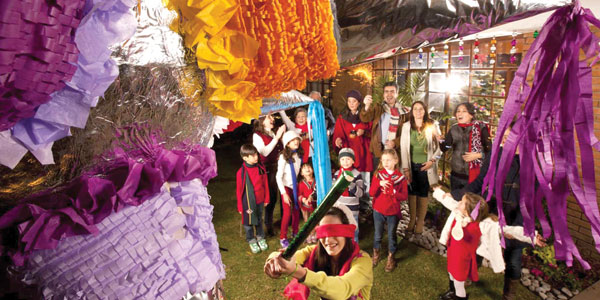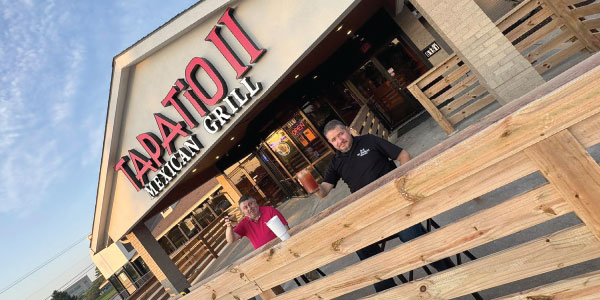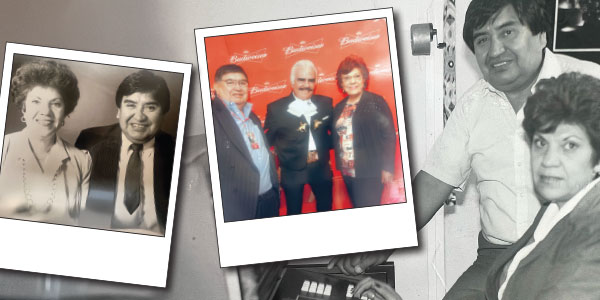
By Tere Siqueira
Many experts claim that Latinos who live in the United States have preserved most of their traditions in part because of the importance they place on observing Christmas.
The origins of some of those traditions date back several centuries. Those traditions include the following:
*The first Christmas: Historical documents report that the first Christmas celebrated in Latin America took place on Dec. 25, 1492. The celebration was held on La Hispaniola, the island where Haiti and the Dominican Republic are located.
Shortly after the Europeans began exploring the Americas, Cristopher Columbus docked on the island when the ship the Santa Maria was having problems. With the help of the island’s indigenous people, the cargo the ship was carrying was safeguarded and a fort was built with wood from the ship. By Dec. 25, construction of the fort was complete.
Columbus named the fort La Navidad (“The Christmas” in English). This was the first known observance of Christmas in the New World.
However, according to the British Broadcasting Corp., Christmas was first officially observed in 1526 in the Western Hemisphere. Franciscan missionary Fray Pedro de Gante wrote to King Carlos V of Spain that he had introduced Christmas as the part of his evangelization process and detailed how he had transformed indigenous customs into Christian ones. De Gante also shared stories about painting Christmas symbols on indigenous blankets.
Las Posadas, Etc.: De Gante also introduced the custom of people seeking shelter while singing religious songs, which has become part of the Posadas observances. In addition, he reportedly produced Christmas plays, now known as pastorelas.
*Pinatas: Pinatas (Piñatas in Spanish) were a part of Chinese culture that arrived in Europe during the 14th century. In addition, indigenous peoples in America used to have sports where they broke clay pots with their eyes covered. Later, Spanish missionaries used the pinata to attract converts to their ceremonies. Centuries later, Christmas pinatas are still infused with religious symbolism.
*Christmas turkeys: As ScienceDaily.com and other sources have noted, turkeys were domesticated in ancient Mexico. The Spanish conquistadors took domesticated turkeys with them from America to Europe. Soon, European royalty began eating the exotic meat instead of lamb. Over time, the popularity of turkey spread to other parts of the world.
*Poinsettia: The most popular Christmas flower worldwide has its roots in Latin America. In 1828, Joel R. Poinsett, an American minister in Mexico, brought the red and green plant to the United States. In 1870, New York City stores started selling them at Christmastime. Around the turn of the 20th century, poinsettias became a common holiday symbol.
Las celebraciones hispanas de navidad tienen raíces de hace siglos
Muchos expertos afirman que los latinos que viven en Estados Unidos han conservado la mayor parte de sus tradiciones en parte debido a la importancia que le dan a la celebración de la Navidad.
Los orígenes de algunas de esas tradiciones se remontan a varios siglos. Esas tradiciones incluyen lo siguiente:
* La primera Navidad: Los documentos históricos informan que la primera Navidad celebrada en América Latina se llevó a cabo el 25 de diciembre de 1492. La celebración se realizó en La Hispaniola, la isla donde se encuentran Haití y la República Dominicana.
Poco después de que los europeos comenzaran a explorar América, Cristopher Columbus atracó en la isla cuando el barco Santa María estaba teniendo problemas. Con la ayuda de los indígenas de la isla, se salvaguardó la carga que llevaba el barco y se construyó un fuerte con madera del barco. Para el 25 de diciembre, la construcción del fuerte estaba completa.
Colón nombró al fuerte La Navidad. Esta fue la primera celebración de la Navidad en el Nuevo Mundo.
Sin embargo, según la British Broadcasting Corp., la Navidad se celebró oficialmente por primera vez en 1526 en el hemisferio occidental. El misionero franciscano Fray Pedro de Gante le escribió al rey Carlos V de España que había introducido la Navidad como parte de su proceso de evangelización y detallaba cómo había transformado las costumbres indígenas en cristianas. De Gante también compartió historias sobre la pintura de símbolos navideños en mantas indígenas.
Las Posadas, etc.: De Gante también introdujo la costumbre de las personas que buscan refugio mientras cantan canciones religiosas, que se han convertido en parte de las celebraciones de Posadas. Además, según se informa, produjo obras de Navidad, ahora conocidas como pastorelas.
* Piñatas: Las piñatas formaron parte de la cultura china que llegó a Europa durante el siglo XIV. Además, los pueblos indígenas de América solían practicar deportes donde rompían vasijas de barro con los ojos tapados. Más tarde, los misioneros españoles usaron la piñata para atraer conversos a sus ceremonias. Siglos más tarde, las piñatas navideñas todavía están impregnadas de simbolismo religioso.
* Pavos de Navidad: Como ScienceDaily.com y otras fuentes han señalado, los pavos fueron domesticados en el antiguo México. Los conquistadores españoles llevaron pavos domesticados de América a Europa. Pronto, la realeza europea comenzó a comer la carne exótica en lugar de cordero. Con el tiempo, la popularidad del pavo se extendió a otras partes del mundo.
* Flor de Nochebuena: La flor de Navidad más popular en todo el mundo tiene sus raíces en América Latina. En 1828, Joel R. Poinsett, un ministro estadounidense en México, trajo la planta roja y verde a los Estados Unidos. En 1870, las tiendas de la ciudad de Nueva York comenzaron a venderlas en Navidad. A finales del siglo XX, las flores de pascua se convirtieron en un común símbolo festivo.










